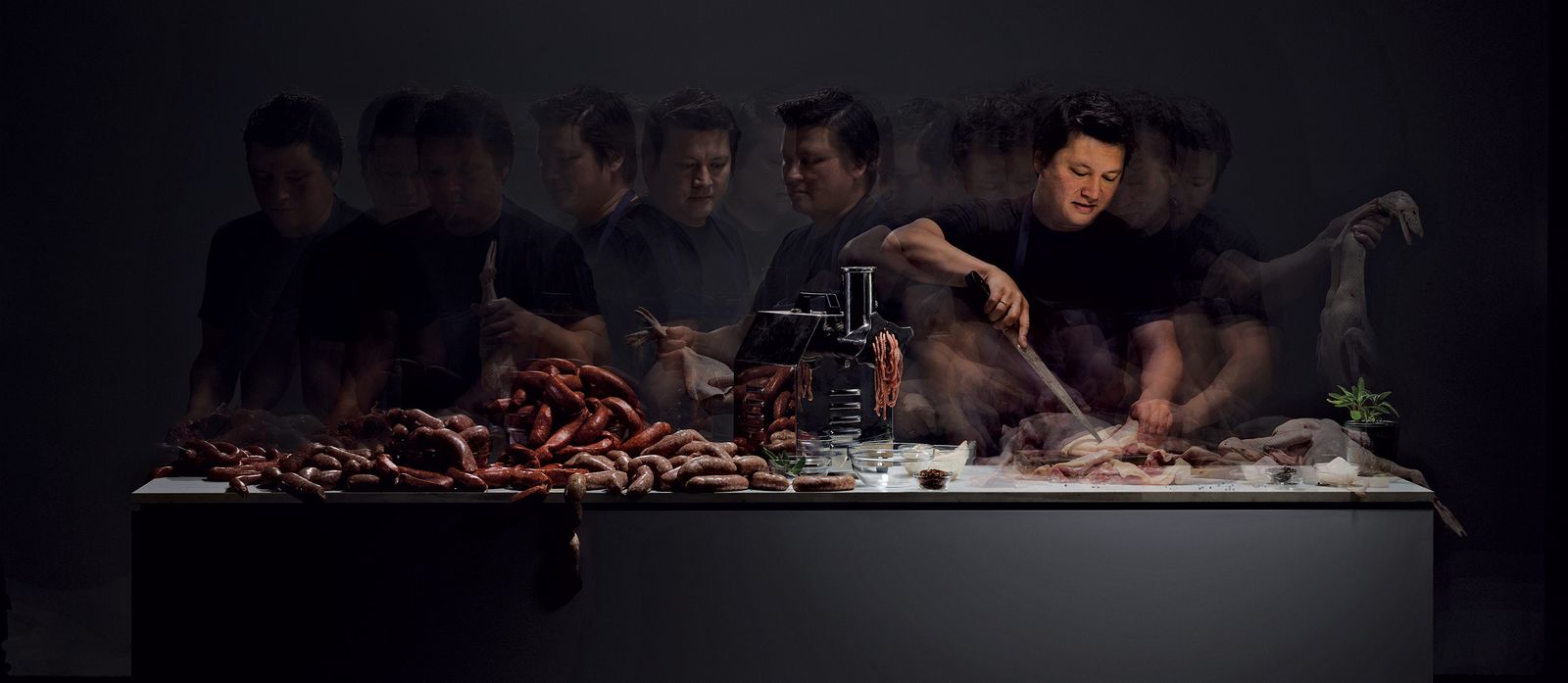This past spring the cook and food writer J. Kenji López-Alt took the stage at Italy’s Teatro Scientifico del Bibiena, in the small city of Mantua, with sacrilege on the brain. López-Alt, known to his devotees simply as Kenji, is a soft-spoken 38-year-old partial to sandals and backyard woodworking, but his laid-back affect obscures a taste for provocation. Mantua is in Lombardy, the birthplace of risotto, and López-Alt, in town to speak at a food festival, had come to tell his audience that the way they’d always made the dish — a technique passed down by two centuries’ worth of beloved, rice-whispering nonnas — could stand some rejiggering. “Italians are the most emotional people in the world when it comes to their food,” López-Alt says. “So I knew I was in for some trouble.”
Making risotto the time-honored way involves three basic steps: Sauté aromatics in fat, toast rice in that mixture, then stir in broth slowly so that the starch thickens to create a creamy sauce. The problem, López-Alt argued onstage, is that this method pits the dish against itself. If only you could prolong the grain-toasting stage, you’d get a huge enhancement of flavor — “a nutty-brown aroma, almost like toasted pine nuts” — but all that toasting would destroy your starches: no creaminess. So he proposed a workaround. Rinse your uncooked rice with broth first and set aside that starchy liquid; toast the rice like crazy; then stir the broth back in, reintroducing the starches you safeguarded in step one. “This way,” López-Alt explains, “you get creaminess and flavor.”
Not everyone in the room saw it that way. When the post-talk Q&A began, a woman tried to ask López-Alt something about freezing basil. Suddenly, another woman cut her off and, in a stream of angry Italian, “told me I was disrespecting risotto and shitting on hundreds of years of tradition.” A stammering moderator managed to return the microphone to the frozen-basil lady. Then, perhaps fearing further revolt, he ended the session altogether. “It’s a very unorthodox way of approaching risotto,” López-Alt concedes.
López-Alt’s best-loved recipes crackle with an elegant, egghead contrarianism. At the Food Lab, the hit blog he writes at Serious Eats, he delights in telling readers that the way they’ve always cooked something is suboptimal, proposing crafty alternatives arrived at through obsessive trial and error. Among his most popular posts is a 2010 investigation into why the most delicious French fries are fried twice, during which López-Alt uses high-precision Starrett dial calipers to verify that the crust formed on a twice-fried fry, “at 39/1000ths-of-an-inch, is over twice as thick as the 17/1000ths-of-an-inch crust formed on a fry that is only fried once.” In 2015, López-Alt put out The Food Lab: Better Home Cooking Through Science, a hefty kitchen manual that sold nearly 500,000 copies and won the James Beard Award for General Cooking. Today, his fans include prominent chefs (Tony Maws, Alton Brown) and a passionate cadre of amateur cooks, among whom his word is authoritative. (“A lot of recipes don’t actually work,” says a cookbook editor at a rival publisher. “Kenji’s work.”) The Times dubbed him “the nerd king of Internet cooking”; the food writer Helen Rosner calls him “a religion.”
López-Alt, who studied biology at MIT before deciding that a career spent experimenting with food sounded more fun, likes to size up a particular dish, “come up with a list of parameters for what I want the end result to be, then try to find a problem with the recipe as we know it that I’m going to solve.” Like any good scientist, he’s committed to following the facts wherever they lead. “Often you find that traditional techniques work really well,” he says, “but it’s nice when you find that they don’t.” Ten years ago, as a young test cook at Cook’s Illustrated, López-Alt struck upon the idea of substituting vodka for some of the water in a piecrust dough, thereby reducing the production of gluten, too much of which can make for unappetizing toughness. Christopher Kimball, the magazine’s notoriously hard-to-please founder, praised the vodka trick as “brilliant” and deemed the recipe “foolproof”; the technique has since permeated the home-cooking world so thoroughly that you may well have used it yourself without knowing its author.
In addition to his risotto and piecrust breakthroughs, López-Alt has made signature innovations to a wide range of foods. He discovered that slow-cooking steak first, then pan-searing it, contra tradition, results in more even cooking and no loss of juiciness. Before roasting potatoes, he parboils them in water “doctored with baking soda,” which encourages the “breakdown of pectin,” thus creating more surface area and “more crunch.” To get the perfect char on a Neapolitan pizza, top to bottom, he forms the pie in a hot cast-iron skillet, transfers it to a broiler, then finishes it off back in the skillet. He sings the praises of sous-vide circulators, pricey gizmos that cook food at perfectly uniform temperatures, but also devised a simple home substitute: plunging bags of sealed food into a beer cooler filled with hot tap water.
López-Alt’s fans refer to such innovations as “hacks” — an apt analogy, given that he lives in the Silicon Valley suburb of San Mateo and describes his social circle and fan base alike as heavy on engineer types who appreciate his combination of technical rigor and wily sabotage. “My readership is mostly men and some Asian women — the techie demographic,” he says. A Manhattan native, López-Alt moved to California three years ago, when his wife, Adri, who has a doctorate in cryptography, landed a job on Google’s security team. He never adored New York, he says, and took readily to life as a suburban homebody.
In the coming weeks, López-Alt plans to add a new line to his résumé: restaurateur. With two partners, he’s opening Wursthall, an enormous, 9,800-square-foot beer hall in downtown San Mateo. It will feature German beers on draft and a menu of sausages and reimagined pub food that López-Alt is precision-engineering to please. His take on a pulled-pork sandwich, for instance, features meat cooked sous-vide, shaped into disks, then flipped over a hot grill to crunch up the exterior: “Americans love crunch and sizzle — the sound of browned flavors — more than anyone in the world,” he says.
What fascinates López-Alt about starting a restaurant is the technical challenge: designing a menu and breaking it down into a sequence of moves that hired cooks can execute, to the letter, on his behalf. What he doesn’t care about, really, is restaurants. For a guy launching a food emporium in one of the world’s most food-obsessed regions — a place heavy on Michelin stars and philosophically dominated by farm-to-table don Alice Waters — López-Alt is surprisingly uninterested in foodie culture. “I have very few impressions of the food scene here,” he confesses, “because we don’t go out to eat much. And when we do, we want it to be friendly and convenient.” When he lived in New York, his favorite spots to eat out were Union Square Cafe, Motorino, and Uncle Boons — “unfussy places” that prioritize well-executed comfort food above all other concerns. Among his happiest discoveries in Silicon Valley is Chef Zhao Bistro, an unheralded Sichuan joint with ’90s-office-style drop ceilings and stainproof glass-topped tables.
For López-Alt, who has built an entire brand synonymous with perfectible cooking, the stakes with Wursthall are especially high. Creating foolproof recipes for home cooks is one thing; cranking out foolproof grub at restaurant scale is another thing entirely. “That’s the No. 1 point of pressure in all of this for me,” he says. “People are going to come in with an impossibly high bar: ‘This is gonna be the best X I’ve ever had!’ And hopefully it will be, but maybe it won’t, because it’s impossible to operate at that level all the time at a family restaurant where you’re paying 14 bucks a plate!” The DIY king of internet cooking, in other words, isn’t sure how the whole IRL thing is going to work out.
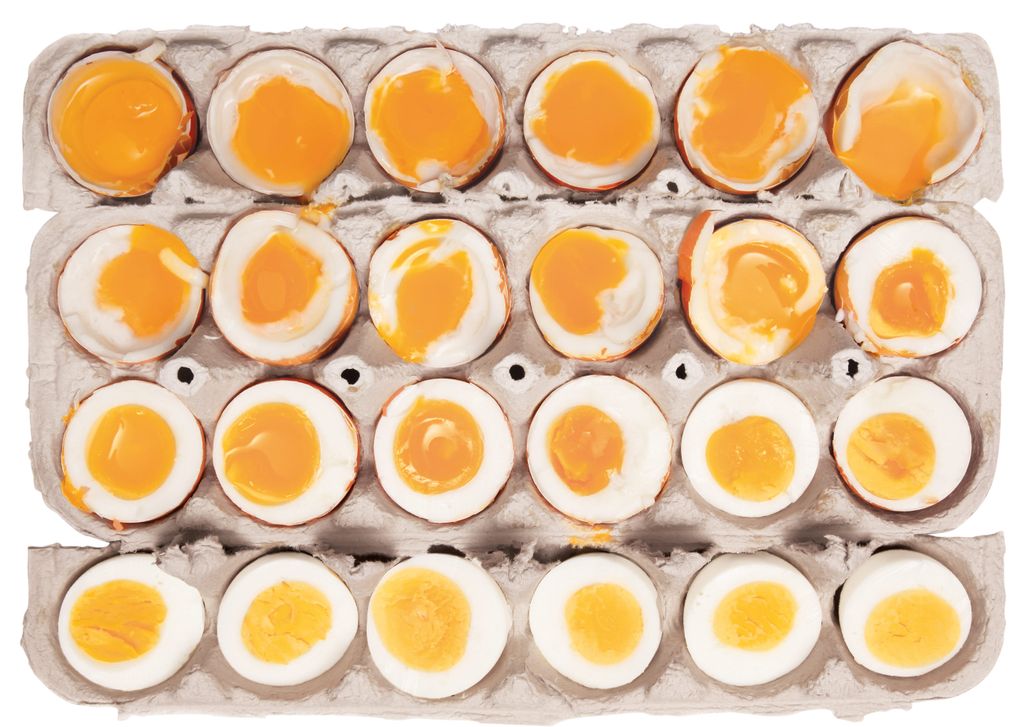
It’s early morning, and López-Alt is already in his kitchen, fine-tuning a salmon marinade and testing out some sausages. He and Adri live with their infant daughter, Alicia, on a block of close-set ranch homes. (Born James Kenji Alt, he added Adri’s surname to his own when they married.) He stands barefoot before a digital scale, wearing relaxed-fit jeans and a T-shirt with BABY DADDY across the chest. He measures one and a half ounces of canola oil, then grinds a quarter-ounce of coriander, noting these measurements on a sticky pad. The recipe is for his next book, a sequel to The Food Lab that will focus more on “everyday cooking.”
When López-Alt is developing a recipe, he will devote days, if not weeks, to analyzing different variations on, say, butter-browning or pasta-par-cooking methods — analysis that he documents in the clear, affably goofy language of a high-school chemistry teacher with a talent for vivid explanation and a weakness for atrocious puns. (Pasta la vista, baby!) In one 5,000-word post titled “The Science of the Best Chocolate Chip Cookies,” López-Alt explains in a laughable degree of detail how he used 32 pounds of flour to perform “over 100 individual tests,” the results of which were 1,536 cookies and 21 overarching “Cookie Facts” (“No. 16: Stirring Warm Dough Alters Chocolate Dispersal”).
His kitchen is modest by suburban standards, but to him it feels palatial compared to the one in the Harlem apartment where he wrote The Food Lab. “I had a Hotpoint oven,” he recalls fondly, “and I could just stand in one place and pivot from one task to another. This kitchen is actually a little too large for me.” The range is a noncommercial Wolf — not a restaurant burner — that came with the house. “It’s about as fancy a range as I’m comfortable with, because I don’t want to test on something no one would ever actually cook on,” he says. “That’s why chefs often write terrible recipes — because they’re out of touch with how people at home actually cook.”
By López-Alt’s count, there are only two truly high-end gadgets in his arsenal: a prototype griddle called a Cinder, which was developed by a Y-Combinator-backed start-up, and a Breville PolyScience induction burner, which has a list price of $1,800. He keeps both in a closet alongside a small, pistol-shaped tool that catches my eye. “That’s a cold smoker,” López-Alt says. “You can put in wood chips and smoke a block of cheese. It’s sort of like an automated bong.” He grins. “My friend smoked some pot out of it.”
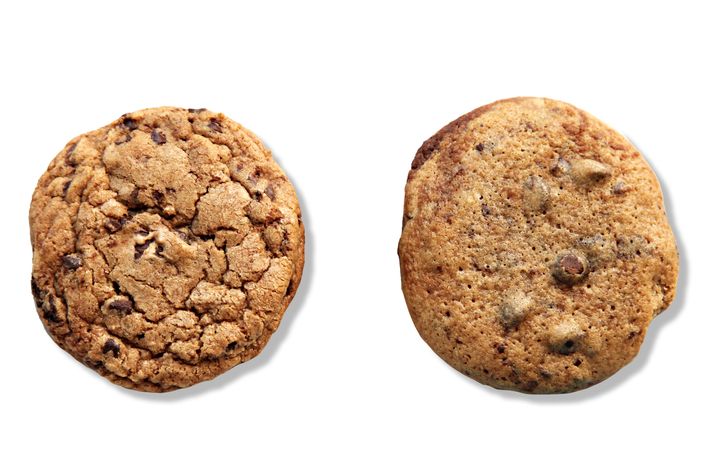
Thanks to his “Well, actually” approach to cooking, López-Alt acknowledges, “I’ve been accused of mansplaining.” But his intent is the opposite: to empower readers to deviate from his recipes as they see fit by illuminating the science underlying a given dish. (If, say, you like your cookies denser and fudgier than he does, you’ve learned from his recipe that those qualities correlate to the proportion of egg yolks to egg whites in your dough, and you can tweak accordingly.) He feels he gets lumped in unfairly with an obnoxious, troll-prone segment of his fan base. “I’ll see these dudes on social media who use what they learned from Food Lab to put other people down.” Even he has come into their crosshairs: “I’ll post a photo of something I’ve cooked, and they tell me, ‘I can’t believe you did it this way.’ Sometimes I think: What have I unleashed?” He adds, “I’m on the Star Wars sub-Reddit a lot, and people there are just so into one-upping each other with their knowledge of the extended Star Wars universe. I think all fans are sort of horrible.”
López-Alt drizzles his marinade over a thick cut of fish. Then, multitasking, he commands an Amazon Echo to activate one gizmo that he keeps in near-constant use: his sous-vide circulator. “Alexa, tell Joule to set the temperature to 150 degrees Fahrenheit.” The Joule, a sleek white cylinder submerged in a tub of water, burbles into action on his countertop; he squeezes eight chubby sausages into an airtight plastic bag and, when the temperature is right, dunks them.
López-Alt is testing these sausages for Wursthall. Rather than making his own sausages in-house — a prohibitively expensive and time-consuming process — he plans to contract with a high-end vendor and then dial in his own combinations of ingredients and flavors. López-Alt has been auditioning contenders for months; today’s batch comes from an outfit in San Francisco that he refers to as “hipster butchers. Young guys with beards. The kind of place that could have popped up in Brooklyn a few years ago.”
López-Alt is starting Wursthall with a local bar owner and self-described “Kenji fanboy” named Adam Simpson, who approached him with the idea, and a third partner, Tyson Mao. López-Alt said yes with little hesitation — in addition to providing a showcase for his ingenuity, it would allow him to feel more rooted in his new city. They decided that sausages would be “the backbone” of the menu because they pair well with beer, they can be cooked in great numbers with a high degree of predictability, and they will stand out in a town whose food scene is a mishmash of strip-mall fast food interspersed with pockets of revered ramen joints and artisanal bakers.
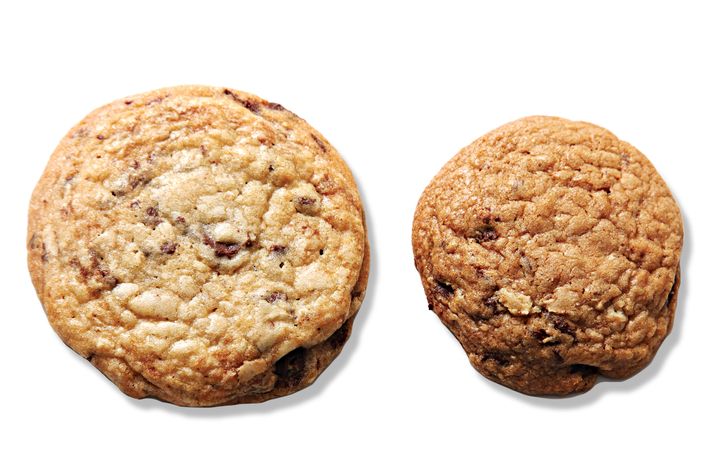
Wursthall’s guiding principle, López-Alt explains, “is a few things done well.” But in building out the menu beyond sausages, he wants to inject each dish with what he learned at Cook’s Illustrated to call an “aha moment — a hook that elevates it.” To that end, there will be a sight gag of a chicken-schnitzel sandwich where the bun is roughly one-third the size of the chicken patty, creating an eye-popping, Saturn-like silhouette. “It’ll look generous,” he says, “and it makes the whole thing more fun and more shareable — with your table, but I mean with the internet. That’s something that, as an online writer, is second nature to me.”
He puts the salmon into his broiler, then glances at the sausages, grimacing. “I’m not hopeful about these,” he says. “Look at all that fat leaking out. They weren’t cased properly.” When the links are done, he holds one between a thumb and forefinger, frowning as it droops dejectedly.
“No springiness,” he says, shaking his head. “This indicates it wasn’t emulsified right.” After a quick pan sear, he arranges the sausages on a carving block and tries the lamb merguez. “The flavor’s good,” he observes, “but it’s way too soft.” The parsley-and-cheese sausage is worse: “Just mush, like hamburger.” The eighth sausage has a surprising snappiness, but by this point the bearded butchers are on the ropes. “This one’s actually good, but I don’t know if they just accidentally got it right,” he says. “A success ratio of one out of eight isn’t good.”
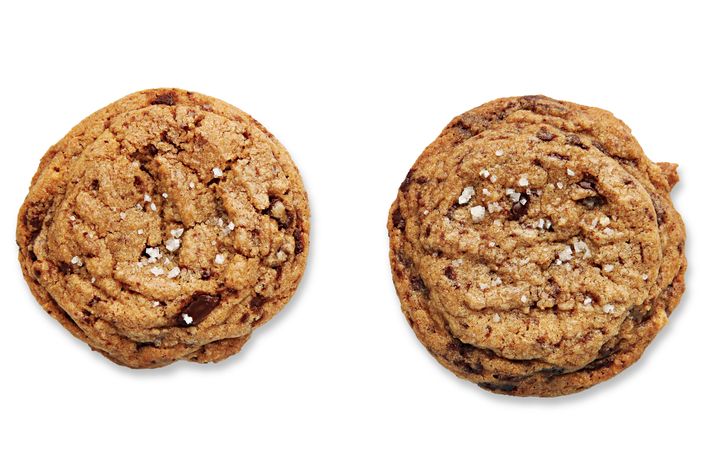
López-Alt enrolled at MIT in 1998 intending to pursue a career in science. But despite the hopes of his father, a professor of microbiology at Harvard, and his mother, who regarded cooking as a deeply unserious calling, he made it only “about halfway” to his biology degree before deciding that “laboratory science was boring” and gravitating toward kitchen jobs in Boston. (He wound up graduating with a degree in architecture.) His elite background notwithstanding, he doesn’t sneer at mainstream tastes: His favorite band is the Beatles, and his most-clicked-on recipe is a no-knead pan pizza formulated explicitly to evoke the taste of ’80s-era Pizza Hut, which reflects his sweet spot for fast food done well. “My contention,” he says, “is that in any city where there’s a Popeyes, Popeyes serves the best fried chicken in that city. Their chicken’s very salty, the crust is really craggy, which means high surface area, the spicing is good, and they cook in volume, so their oil level is always right.”
López-Alt is suspicious of most forms of connoisseurship. He tells me he could never imagine himself as a wine geek, because of wine’s irreducibly squishy subjectivity. “Wine is inherently less democratic than food,” he says. “With food, you have hamburgers and pizza — that thing that everyone thinks is good. That’s not the case with wine, where the balance is shifted to nonmeasurable, non-tastable things, like stories about the winegrower and the terroir and trends in the wine world. There’s a snobbery to it.”
When it comes to eating out, he knows that good service matters nearly as much as good food, but his definition of good service is avowedly minimalist. He has little patience for the bits of ancillary theater that restaurants routinely serve up alongside cooking, and so at Wursthall there will be no mini-biographies of the animals and vegetables on your plate, no charming spiels about the farmers who raised them. Questions of décor and music and employee dress fall mercifully outside his jurisdiction.
A few feet from López-Alt’s kitchen island, a Canon EOS 5D Mark II stands at the ready on a tripod. He photographed every recipe for The Food Lab himself, and part of the book’s counterintuitive appeal is the obstinate plainness of its images. Unlike the prettified portraiture familiar to us from Bon Appétit and a trillion overhead Instagram brunch shots, his photos have a utilitarian quality that underscores his emphasis on untrendy, evidentiary sturdiness: “There’s nothing I do in the book just for the sake of making the photos look good.”
The Food Lab features numerous dishes that are almost antagonistically unsexy, including green-bean casserole, cheesy broccoli casserole, and “three-day meatloaf.” López-Alt explains his interest in such hoary American staples as threefold: nostalgia for the “Betty Crocker stuff” his mother learned to make when she moved to the U.S. from Japan, the enduring hunger for middle-of-the-road American classics, and the challenge of trying to elevate a workhorse dish in a way that will “legitimize people’s love of lowbrow food. Part of the appeal is, This guy’s trying to make meatloaf taste good? There’s nothing more lowbrow than meatloaf, but now it’s in this big beautiful book. That’s me saying: It’s okay to like meatloaf.”
Recently, López-Alt took a family vacation to Washington State, spending a few days near Olympic National Park. “The closest grocery was a Walmart,” he says, “and we wound up making dinner one night from an Old El Paso hard-shell taco kit.” López-Alt commemorated that dinner on Instagram with a post captioned “awwwwww yeah. #fuckauthenticity.” Describing it now, he shrugs. “People love that shit — and it was fine!” He admits a difference in kind between authentic cuisines and their bastardized offspring, but not a default difference in quality. “I’m doing a hard-shell-taco recipe in my next book,” he says.
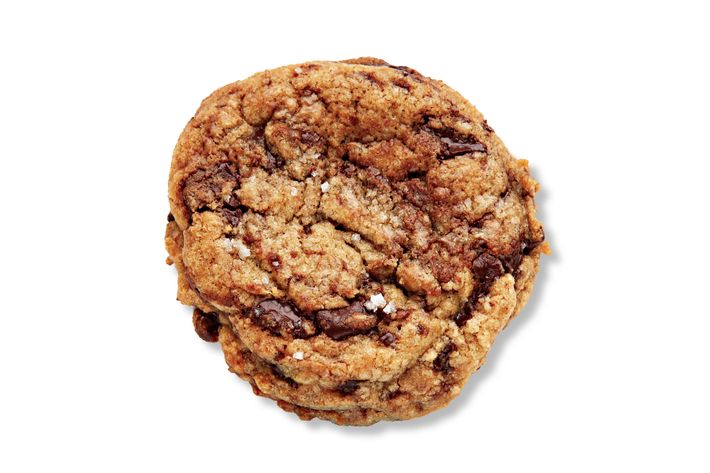
One morning in late fall, with Wursthall’s opening looming, López-Alt parks his Prius outside the restaurant — or outside the construction site in the process of becoming the restaurant, anyway. Alicia bobs in a carrier strapped to his chest. Inside, a workman attends to some wall paneling. We go in search of Adam Simpson, weaving amid boxes of stock pots and taking care not to trip on tangles of loose wiring. “We’re getting there,” he says. “The final coats of paint, the final walls are going up.”
We find Simpson downstairs, inspecting what will become a men’s room. López-Alt presents him with a Tupperware container containing two prototype meatless sausages.
“It’s crazy that this is vegan,” Simpson says, nodding in approval.
“I’m using this enzyme that binds proteins,” López-Alt replies. “It’s way under-salted, but once you get the texture down, you can make them any flavor you want.”
Simpson takes López-Alt back upstairs to show him the layout of the kitchen, which will be open to the dining room. “The hand-washing station for the cooks will be too close to the doorway there,” López-Alt points out. He squints at an enormous Vulcan “flattop” griddle. “That doesn’t seem like it’s level.”
López-Alt is ultimately breezy about such details. “We won’t know about kitchen flow until the place is open and there are line cooks moving through there and customers ordering certain things more than others,” he says. Far more stressful is the issue of designing a menu that will work at scale. “Executing a dish in a restaurant is different from a home cook, who’s only making it once,” he says. “Here, it’s gonna be the same thing 100 times a night. If it’s Saturday and the line cook has 40 sausages on the grill at once, can they perfectly cook each one?” López-Alt gestures to a little room off the kitchen where he intends to install a small armada of sous-vide circulators — one of the “safeguards” he’s building into the process. “It minimizes those points of variability,” he says, “because cooking sous-vide gives you guaranteed results.”
All the same, he acknowledges that “no matter how much you plan, there’ll be mistakes. The important thing is to keep perspective and realize there’s no way …” He trails off, contemplating the inevitable nightly mishaps, the democratic vagaries of Yelp, the diehard mansplainers in his fan base who are sure to descend on the place in droves. “It’s like on the internet,” he finally declares. “There’ll always be some jerk who’s unhappy no matter what.”
Kitchen Lab Notes
In his next book, slated for 2019, J. Kenji López-Alt is bringing his scientific rigor to everyday meals. Here, a glimpse into the experimentation that went into a single recipe for a red-curry paste that uses traditional ingredients:
The Goal
Getting the most flavor out of hard-to-grind ingredients like chiles and coriander in the shortest time possible.
The Problem
“The best method by far to extract flavor from inside plant cells — and this isn’t an old wives’ tale — is a mortar and pestle. But when you’re making a big batch of curry paste, it can take an hour.”
Trial and Error
Using a food processor or a blender sped up the process but didn’t bring out the flavors. “I probably tried 18 different variations. I started with tough ingredients in the food processor to see if I could break them down enough. I added water in a blender and made it more of a smoothie, but it’s really difficult to fry a milkshake.”
The Aha Moment
Freezing is your friend. “Freezing destroys the texture and structural integrity of vegetables. People always think of that as a negative, but the ice crystals break down cell walls. For curry paste, it gives you a head start.”
Back to the Lab
“I tried a bunch of freezing variations: pounding then freezing, making it more liquid. But to get maximum flavor and reproduce the texture, I started completely freezing all the ingredients before grinding them with the mortar: the chiles, coriander, everything else.”
Eureka!
“Instead of an hour, it takes you 15 minutes — and just five in the mortar and pestle.”
—Chris Crowley
*This article appears in the December 25, 2017, issue of New York Magazine.
